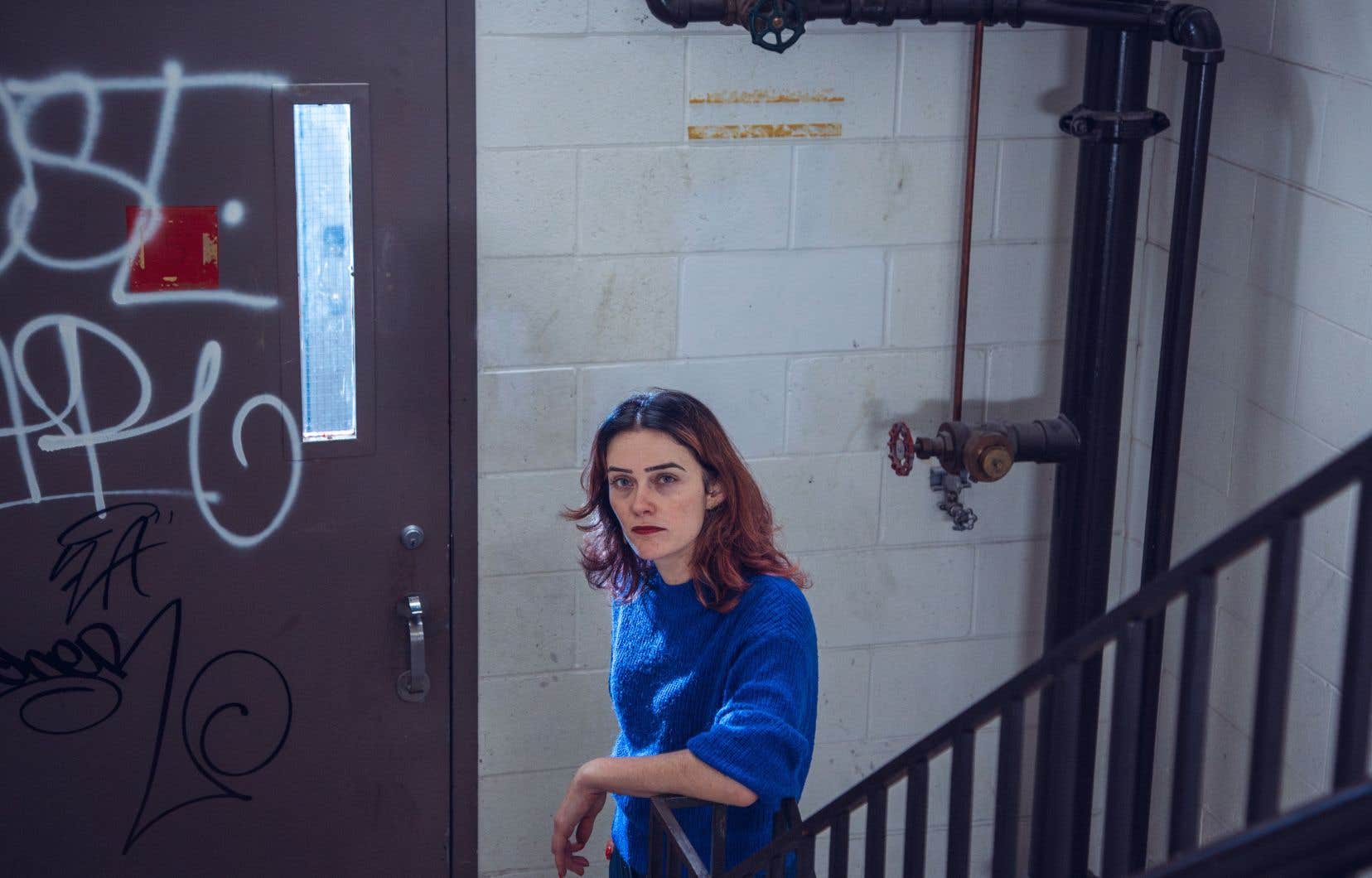I think of a cloth that is twisted and from which water flows in channels,” writes essayist Gabrielle Giasson-Dulude. “To think is to enter into one’s resistances, its fluids, its blind spots, its holes, which are also contemplations, glances, doubts, the impression of simplifying or distorting something. In writing, we can lie, we can deceive, we can avoid each other, go around, stop along the way, but from the body, as the lie detectors know, we reveal ourselves. »
For three books, Gabrielle Giasson-Dulude has been thinking about the relationships between thought, the arts, speech, singing, silences, feeling and the body — which are also thought for her.
She continues in her most recent opus, Between the walls, voiceshis path started in 2015 with poetry, in the very urban Portrait of a man (Noroît, 2015), and continued with the short and magnificent essay The mime’s songs. In the company of Étienne Decroux (Noroît, 2017).
Hailed by the Contre-jour and Spirale Eva-Le-Grand prizes, this book worked through the mime Étienne Decroux to weave fine fragments on the importance and links between silence, mime, poetry, Decroux, potential revolt, old trades, technique, authenticity. Among others.
The starting anecdoteBetween the walls, voices Is simple. To survive writing her doctoral thesis, in the small windowless concrete cubicle assigned to her by UQAM, without ending up with a stunted spine and body, the narrator, who we sense is very close to the author, takes refuge in the stairwells, their graffiti, their cigarette butts, sometimes with their smell of piss, to sing there.
From this exercise of academic freedom, Mme Giasson-Dulude delivers an exercise in essayistic freedom and a sensitive and constructive critique of the academic world.
“I try to think about what violence does to my body, by paraphrasing or trying to get away from the formulas, or by trying to trust more in what I feel and then precisely in relation to the formulas, in what I also find it restrictive or what I find limiting or sometimes obtuse, too. »
Cage songs and bird songs
Thinking and feeling, for her, are part of the same struggle: “For me, it is a dialogue that I articulate between the sensations of the body and of thought. » Here, she reflects on the teaching and, through the band, the authorities that we agree with or not, that we submit to or not, those that crush or galvanize, the voices that we promote, those that we hear perhaps more strongly than others.
I try to think about what the violence does to my body, by paraphrasing or trying to get out of formulas, or by trying to trust more in what I feel
The one who is also a mime, a professor of literary creation, a singer (amateur, she explains, because “I feel what still eludes me, even if it is improving a lot. There, I start scat, and I hear clearly in my singing everything that I do not completely understand…”) uses all this knowledge and his experiences to develop his point.
She quotes extensively: her students, literature, thinkers like Vinciane Despret and Claire Marin – in whose tradition she follows, with their less traditional vision – but also lyrics from jazz standards. Drawings by Marie-Claude Lepiez are added here and there — cages, hands, stairs, brick walls; and all this serves to construct thought.
“In the vocal gesture,” we read, “just as in the written word, strategies of maintaining authority, negotiating space and appropriating territories are brought into play: every day, in front of the fear of being pushed down, of being worthless in the eyes of others, differences are worrying. Cohabiting is never simple. »
“But this: when there is no place for oneself, it is because a power is at work,” continues Mme Giasson-Dulude. “You have to think about it, get around it. We can invent our place, step by step, gesture by gesture, touch by touch, sentence by sentence. »
The voices of the thinking head
His questioning of traditional authority, power, patriarchy, institutions, the lack of diversity of voices, the lack of space for bodies and hesitations, his demand for a space where vulnerability and wounds could breathe , out of their cages, are all elements that some observers associate with a current trend and label as woke.
She reflects: “I have the impression that often, in protest speeches, we attach ourselves to formulas. We repeat words, we try to argue, therefore to be right. And we repeat words again and again, so we lock ourselves in, in these formulas. » M’s reflectionme Giasson-Dulude is built rather in the circulation of ideas, porosity, doubt too.
“It took me time,” the author continues, “to realize that I also needed an authority for my speaking. How, once we have authority, can we ensure that we do not abuse it? I am trying to unravel these questions. And I see clearly that as much as I have sought this authority, I am also wary of it; and as much as I am wary of myself when I look for her. Power is necessary. I would like to make sure that it never becomes a hold. »
Finally, what to expect when publishing a literary essay in Quebec? She sighs and smiles at the same time. “I would answer that I don’t expect anything…” She herself interrupts this commonplace, which does not seem to satisfy her, to resume: “From the point of view of writing, I want to put ideas moving. I am looking for space, movement; and that what I took elsewhere be relayed, all these books that I cite. If I write, it is because I participate, I want to participate in this relay system. »
